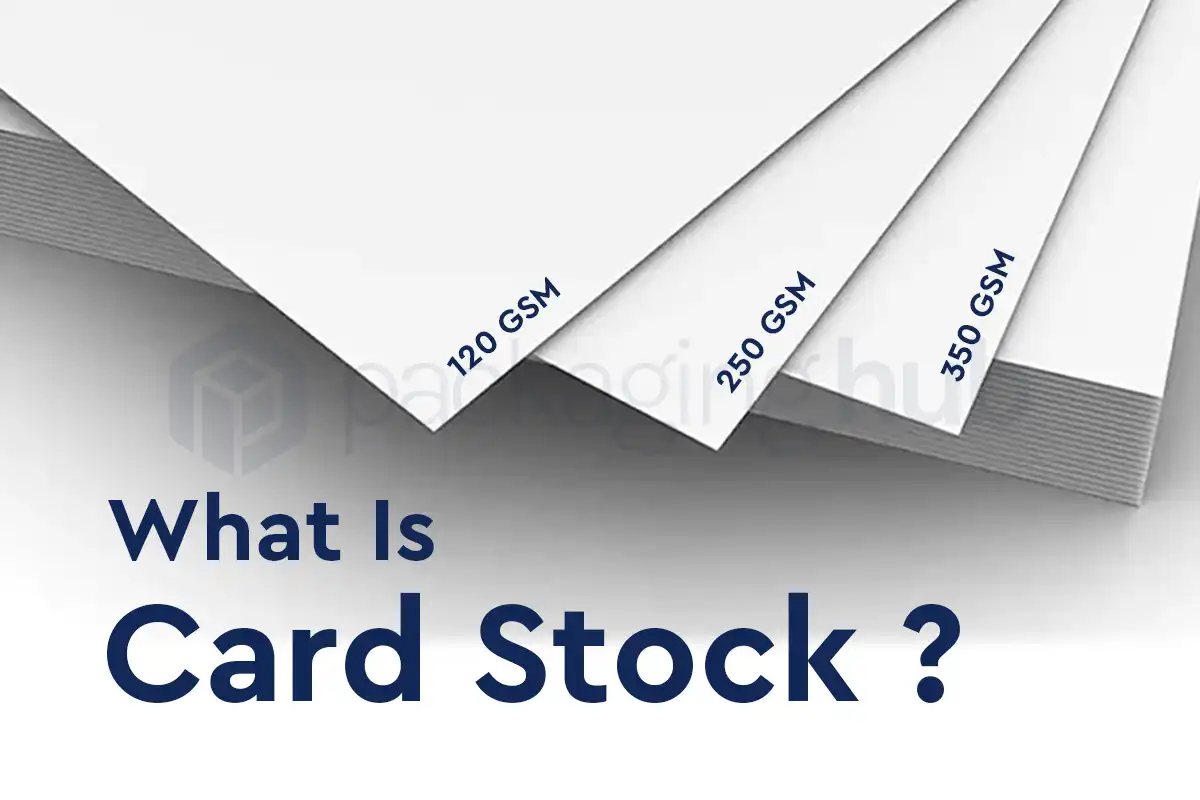Welcome Back!
Home » Blog » What Is Card Stock – Pros, Cons, And Uses

Last Updated on February 25, 2025 by Steve Harsh
If you are in the packaging business, you may want to use card stock for your products. This material is amazing for certain needs, as it is thick, rigid, and holds its shape.
You can create a list of products from it, like invitations, greeting cards, and paper crafts. In this blog, you can learn about its pros, cons, features, and other information.
There is a long list of cardstock material types that offer different yet impressive pros for packaging and printing needs:
Table of Contents
ToggleSmoother card stock is famous for having some features that other card stock types do not have. For instance:
This material is unique with so many features that offer beauty and impressiveness, like:
Colored cardstock allows vibrant and diverse beauty with better branding and flexibility for various projects. It also works when you have a thematic need for seasonal projects. They try to highlight specific packaging portions; it also helps you create visual contrast when combined with other materials.
Also, they will give you fantastic printability by supporting multiple colors and adding a visual impact. Due to their vibrant color, this material makes things memorable.
As the name says, this material has embossed patterns that offer your customers a tactile experience. At the same time, these patterns and the quality of their prints provide visual appeal. You can use them for their elegant and luxurious appearance, with fantastic customization potential.
The embossing also helps improve the material’s durability and works perfectly for branded jobs. You can also try using different finishes on this material for a unique visual appeal.
Laminated cardstock has better durability and resistance against moisture. Also, it comes with an extended lifespan with smoothness and a glossy feel. At the same time, it offers a glossy feel and protection from fading.
You can also use it for its various color options, which are vibrant. It is also customizable with different finishes.
Coated cardstock offers a protective layer against things related to the paper’s topic. It is available in finishes with smooth and even surfaces. It comes with high-quality printing that also offers sharp text and amazing details.
It also offers various colors and shades with finishes like matte and glossy.
Here are some pros of die-cut card stock material:
The pros of card stock are that it offers you a lot of stability and strength.
This material’s main benefit is strength, which allows you to offer durability in different situations. It is perfect for products that need to retain their shape and offers good print quality. At the same time, this material offers much customization that comes with embellishments.
Also, you can find card stock to be a strong material type of longevity it provides. You can also use them for their resistance against moisture and fading, making them a good choice.
This material also offers rigidity and thickness, improving the field in which your customers have used the product. Its smooth and consistent surface makes it amazing, with its colors and well-published sharp text. Its boyfriends of colors also make it stand out.
Card stock also has a special, thick feel that makes it luxurious and sophisticated. It is a material that can be used in various industries.
It also allows you to do amazing paintings and branding. You can also use it for its ability to use a variety of finishes. For instance, it works for textured, glossy, and matte finishes.
You can use it with embossing or die-cut to make unique shapes and designs. It also offers you a fantastic appearance that comes with an impressive presentation. It also allows you to be a great choice for limited-edition products.
On the other hand, it can also be used as a prototyped product due to its strength.
Cardstock can resist moisture as it offers coatings. Sometimes, it also offers you a better resistance against moisture when made of synthetic materials. At the same time, its use can help improve its ability to resist moisture.
This material’s writing surface is quite helpful in many customizations. This surface is famous for being even and smooth, allowing easy painting. At the same time, it carries vibrant colors and sharp lines, allowing inks and pencils to work well.
Card stock is also famous for reducing the chances of smudging, allowing better printing. The material also makes it easier to remove any mistakes, allowing better printing. Due to its amazing features, you can even try it for calligraphy and handwritten lettering.
There are pros of cardstock; still, there are some drawbacks you need to know.
Although it may be considered a strong and robust material, it is still susceptible to collapsing and deforming under heavy pressure. Another point to remember here is that the design of your card stroke also matters in such situations. So, if you use a box with a good design, it may be able to bear a lot of weight, and vice versa.
Due to this drawback, you may consider it a material you can use for non-bulky items. At the same time, you should consider the use of the box you are manufacturing.
Cardstock boxes may be considered thick and have bulkiness, which may not be very much welcomed. Another thing to remember about these boxes is that they take up too much space. At the same time, the shape and size are not changed when empty, which may make them look bulky.
Another thing to remember is that they may carry more volume than they can handle. This means that they may not be preferable when shipping something heavier.
Another corner of cardstock is that it does not provide good cushioning, making it less preferable. Also, it can carry vulnerability to damage against vibrations, drops, and pressure. You may add elements to such packaging against pressure to help against these issues.
If you are looking for cost-efficient solutions, card stock may not be the best option due to its higher expense levels. It is also one of the bulkier materials, leading to higher shipping costs. This material may also cost you more due to its storage space limitations.
This means storing them as product material will take up more space, leading to higher costs.
When it comes to the uses of cardstock, there’s a long list of products made from it, like:
Cardstock’s standard features make it an excellent choice for all these products. It offers thickness, durability, printability, and customization. Also, it provides stiffness and flatness, with crisp folding and smooth cutting of the boxes made with it.
There’s a long list of alternatives to card stock that can be better than it in specific ways. Here are some other options you should know about:
When it comes to cardstock and cardboard, here are some key differences to keep in mind:
Cardstock is one of the stronger materials and has a great premium look and feel. The matte finish, on the other hand, has a non-reflective surface with easy-to-read text options. It also provides a professional look and is resistant to fingerprints.
The thickness of the card stock may vary depending on the brand you get it from. Also, the standard method of measuring it is not with the thickness but with the weight of the material. The typical thickness of the material can be between 0.006 to 0.014 inches.
You can add this type of paper to cardstock for its distinctive look and beauty. This material is used on greeting cards, business cards, invitations, and menus. It can also be used on promotional materials, stationery, and certificates.
Some features of premium card stock make it better than the common one. For instance, it offers better thickness, weight, printability, and surface finish. At the same time, it is famous for its amazing ability to withstand wear and tear against different factors.
When printing business cards, you must look for a material that offers a smooth finish and an impressive weight. Try choosing card stock in neutral shades like cream and ivory. At the same time, look for a paper that offers a matte finish and comes with multiple coating options. You can also try multiple textures to create an aesthetic feel for your cards.
Regarding the size of cardstock paper, you can use different types. For instance, it comes in a legal cardstock size of 8.5 inches by 14 inches. Then there is tabloid size, which is 11 by 17 inches, and you can use it for posters, artwork, and larger documents. It also comes in A4 size, around 1 millimeter by 297 millimeters.
Here are the main differences between paper stock and card stock:
If you’re looking for packaging boxes in the cardstock department, Packaging Hub can help. We offer a wide range of solutions, helping you find the best products for your needs.
This blog was educational content to help you understand different types of card stock. At the same time, we tried our best to help you with the various pros and cons of this type of material. Also, you can read about different alternatives that you can use for packaging and printing.

Order your stylish and durable custom boxes and packaging from a team of industry experts.